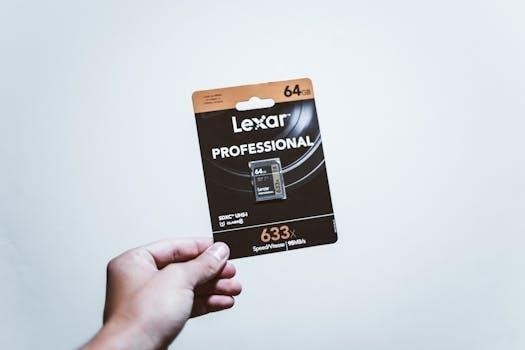What is a Transfer on Death Deed?
A Transfer on Death (TOD) deed, also known as a beneficiary deed, is a legal instrument allowing real property transfer to a designated beneficiary upon the owner’s death without probate. This is specific to New Mexico.
Definition and Purpose
A Transfer on Death (TOD) deed in New Mexico is a legal document that enables property owners to transfer their real estate to a designated beneficiary upon their death without the need for probate court proceedings. This deed serves as a tool for estate planning, allowing for a smooth and direct transition of property ownership to loved ones, avoiding the complexities and costs associated with traditional probate processes. It ensures the property passes to the intended recipient.

New Mexico Specifics
New Mexico law allows property owners to use a Transfer on Death deed to transfer real estate directly to a beneficiary upon death, bypassing the probate process. This is a specific legal tool.
Legal Basis in New Mexico
The legal foundation for Transfer on Death deeds in New Mexico is established by state statutes, enabling real property owners to transfer their property to a designated beneficiary upon their death. This law specifically permits this method of property transfer as an alternative to traditional probate proceedings. This framework ensures that the transfer occurs outside of the probate system, provided the deed meets all statutory requirements of the state. The law aims to provide a streamlined process for property transfer.
Requirements for a Valid TOD Deed
For a Transfer on Death deed to be valid in New Mexico, it must meet several specific requirements. The deed must contain essential elements of a recordable inter vivos deed, state the transfer occurs upon the transferor’s death, and be recorded in the county where the property is located before the owner’s death. It requires the grantor’s signature, must be acknowledged by a notary public, and include a complete legal description of the property. The form must also clearly identify the grantor and the beneficiary or beneficiaries.

Key Elements of a TOD Deed
A valid TOD deed in New Mexico requires essential elements, including a clear designation of the beneficiary. It must also be properly signed, notarized, and recorded before the owner’s death.
Essential Elements and Formalities
In New Mexico, a Transfer on Death deed must contain the essential elements and formalities of a recordable inter vivos deed; This includes a clear legal description of the property, the grantor’s signature, and acknowledgement before a notary public. The deed must also explicitly state that the property transfer to the beneficiary will occur upon the grantor’s death. It is also crucial that the deed be recorded in the county where the property is located before the grantor’s demise to be legally valid;
Beneficiary Designation
A New Mexico Transfer on Death deed allows the property owner, known as the grantor, to designate one or more beneficiaries who will inherit the property upon their death. The beneficiary designation must be clear and unambiguous, clearly identifying the individuals or entities set to receive the property. This designation ensures that the property passes directly to the chosen beneficiaries, bypassing probate proceedings. The grantor retains full control of the property and can change the beneficiary at any time before their death.
Process of Using a TOD Deed
To use a TOD deed in New Mexico, it must be properly executed, acknowledged before a notary, and recorded in the county where the property is located before the grantor’s death.
Recording Requirements
In New Mexico, a Transfer on Death deed must be recorded before the owner’s death to be valid. The recording must occur in the public records of the county clerk’s office where the property is situated. This ensures that the transfer is officially recognized and legally binding. The deed needs to be properly acknowledged and signed before a notary public before it is submitted for recording. Failure to record the deed before the owner’s death will render it ineffective for transferring the property to the designated beneficiary.

Important Considerations
New Mexico’s 120-hour survivorship rule is a crucial factor; the beneficiary must outlive the property owner by 120 hours (5 days) to inherit, otherwise the transfer will not happen.
120-Hour Survivorship Rule
In New Mexico, a critical aspect of a Transfer on Death deed is the 120-hour survivorship rule. This rule dictates that for a beneficiary to inherit property through a TOD deed, they must survive the property owner by a minimum of 120 hours, which is equivalent to five full days. If the beneficiary dies within this period, the property transfer is nullified, preventing unintended consequences.
TOD Deed vs. Other Estate Planning Tools
Unlike wills, a TOD deed in New Mexico avoids probate, transferring property directly to the beneficiary. This offers a streamlined alternative for real estate transfers, bypassing lengthy court processes.
Avoiding Probate
A significant advantage of a Transfer on Death deed in New Mexico is its ability to bypass the probate process. Unlike traditional wills, which often require court proceedings, a TOD deed allows for the direct transfer of real property to the designated beneficiary upon the owner’s death. This can save time, reduce costs, and provide a smoother transition of property ownership, ensuring that assets are transferred efficiently and without the complexities associated with probate court. This is a significant benefit for those wanting a simpler way to pass property.
Revocation and Changes
A New Mexico TOD deed can be revoked or modified by the property owner at any time before their death. This flexibility allows for changes as life circumstances evolve.
Ability to Revoke or Modify
The grantor of a New Mexico Transfer on Death deed retains the complete ability to revoke or modify the deed at any point before their passing. This means that the designated beneficiary can be changed, or the deed can be entirely cancelled, if the owner’s circumstances or wishes change. The original deed has no effect until the grantor’s death, offering flexibility in estate planning. This can be achieved by recording a new TOD deed or a revocation document in the county where the property is located.
Professional Assistance
Seeking legal advice is crucial when drafting a Transfer on Death deed. Attorneys can ensure the deed is coordinated with your estate plan and meets all legal requirements.
Importance of Legal Advice
While it may seem straightforward, drafting a Transfer on Death deed requires careful attention to detail. Consulting with an attorney ensures the deed is legally sound and aligns with your overall estate plan. They can navigate the complexities of New Mexico law, ensuring the document is properly executed, recorded, and that it achieves your desired outcome. This guidance can prevent potential issues and ensure your property transfer is executed smoothly.

Limitations of a TOD Deed
A TOD deed does not affect joint tenancies; the surviving joint tenant’s rights prevail. Additionally, existing liens or mortgages on the property remain after the transfer.
Joint Tenancy and Encumbrances
It’s crucial to understand that a Transfer on Death (TOD) deed does not override joint tenancy rights. If the property is held in joint tenancy, the surviving joint tenant will inherit the property, irrespective of any beneficiary named in the TOD deed. Furthermore, any existing liens, mortgages, or other encumbrances on the property at the time of the owner’s death will remain and transfer with the property to the beneficiary. The beneficiary will inherit the property subject to those existing financial obligations. So, a TOD deed only transfers ownership, but it does not clear any debts.
